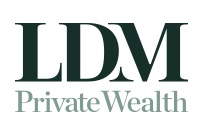Australia’s property market is finishing the year showing a softening in prices with annual growth in national home values continuing to ease, reducing to 6.0 per cent over the 12 months ending October, down from a recent peak annual growth rate of 9.7 per cent in February.
CoreLogic’s national Home Value Index (HVI) has reported a quarterly increase of 0.9 per cent, compared to 2.1 per cent the same time last year. In line with a softening market the HVI index recorded a monthly movement of just 0.3 per cent – the smallest monthly gain since the growth cycle commenced in February last year. The median dwelling price in Australia now sits at $809,849, up from the same time last year at $753,654.
The weak positive movement over the quarter was supported by the mid-sized capitals, led by Perth, followed by Adelaide and Brisbane, offsetting declines in Darwin, Canberra and Melbourne, while Sydney growth slowed to 0.1 per cent.

Expensive areas showing weakness
According to CoreLogic, weaker conditions were led by the most expensive areas of the market, with a fall of 0.6 per cent in upper quartile housing values and a 1.1 per cent drop over the past three months.
CoreLogic’s research director Tim Lawless notes that the stronger performance across the more affordable end of the market is a consistent theme across the capital cities. “A combination of less borrowing capacity and broader affordability challenges, as well as a higher-than-average share of investors and first home buyers in the market is the most likely explanation for stronger conditions across the lower value cohorts of the market.
Increased stock levels contributing to lower growth
A rise in advertised stock levels has contributed to lower growth in home values, particularly in the weakest markets. Advertised listings have increased 12.7 per cent since the end of winter across the combined capitals, with the largest increase occurring in Perth. Total listings are now 13.2 per cent above the previous five-year average in Sydney and 13.0 per cent higher in Melbourne, helping explain the weaker conditions in these markets as buyers benefit from more choice and less urgency in their decision making.
Alongside the rise in advertised supply, the number of home sales is declining. With higher levels of advertised supply and less purchasing activity, selling conditions have loosened.
The outlook
The housing outlook is likely to continue to be impacted by rising advertised stock levels and a slowdown in purchasing activity. On the upside, the latest figures are showing a trend towards lower inflation, meaning a cut in interest rates is looking likely in the first quarter of next year. Lower interest rates will help to improve serviceability and boost sentiment. Another positive is labour markets are holding tight, with the unemployment rates holding at 4.1 per cent for the past couple of months. Additionally, low levels of new housing supply will persist into the near future.
On the downside, affordability challenges continue to be felt across most sectors of the housing market. Economic activity is soft and households have largely drawn down their savings buffers accrued through the pandemic. Looking at affordability measures, debt servicing ratios were at a record high in the September quarter and dwelling values relative to household incomes were also close to record highs.
Dwelling values over the quarter
Melbourne
The Victorian capital posted a -0.8 per cent quarterly move according to CoreLogic figures, taking the city’s median dwelling price to $778,926. Investors should take note that the gross rental yield figure for Melbourne now sits at 3.7 per cent.
Sydney
In the three months to October’s end, Sydney experienced a very subtle dwelling value change of 0.1 per cent resulting in a median of $1.193 million. The gross rental yield for the Harbour City is currently the lowest in of the capitals at 3.0 per cent.
Brisbane
The Queensland capital has again recorded the second most expensive spot for dwelling values at $883,357, although growth is softening after a quarterly rise of 2.4 per cent. Brisbane has recorded a gross rental yield of 3.7 per cent.
Canberra
The national capital recorded a decline of -0.9 per cent during the quarter with the median now sitting at $850,223. For Canberra, the gross rental yield is 4.0 per cent.
Perth
Continuing its lead as the best-performing capital over the quarter, Perth jumped 4.1 per cent in three months taking its medium to $804,621. Perth recorded 4.2 per cent gross rental yield.
For more information about how you might be able to purchase a property in the current market, get in touch with us today.
Note: all figures in the city snapshots are sourced from: CoreLogic’s national Home Value Index (October 2024)


